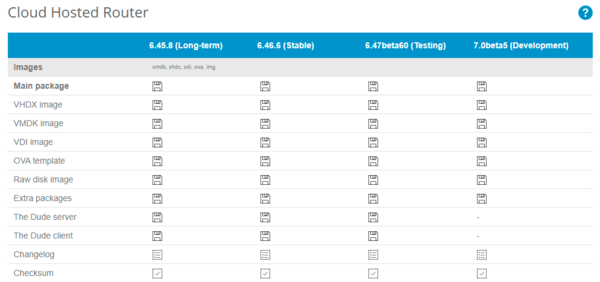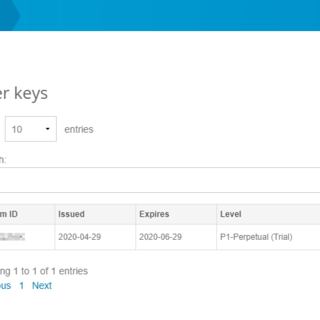

If you don’t have a MikroTik account, get one here. You will need the credentials for your MikroTik account. Use any of the following methods to find out the adquired address.

This is handy for lab purposes, or low traffic scenarios like stand-alone DHCP servers.Ī DHCP client is enabled by default on the single existing ether1 interface. Creating new VM from OVA template Setting VM name, and uploading OVA file I’ll use local storage for it Thin provisioned disks, and a previously configured VM network Review everything, and deploy Initial ConfigurationĪfter the VM boots, log in via CLI with the default credentials:ĬHR comes with a free licence by default, limited to 1Mbps upload limit. The OVA comes preconfigured with a single network adapter, but more interfaces can be added on a later stage. Once downloaded, the OVA can be used to deploy a new instance. The easiest way to spin up a working instance of CHR is using the OVA appliance provided by MikroTik. Th p1/p10/pU licenses can be tested with a 60 days trial. This level comes activated by default on all images. All the rest of the features have no restrictions. The free license level allows CHR to run indefinitely, with a limit of 1Mbps upload per interface. There are two ways to use and try CHR free of charge. It is the highest tier license and it has no enforced limitations. The p-unlimited (perpetual-unlimited) license level allows CHR to run indefinitely. All features are available without restrictions. P10 (perpetual-10), which also allows CHR to run indefinitely, with a 10Gbps upload limit per interface. It can be upgraded p1 to p10 or p-unlimited. All the rest of the features provided by CHR are available without restrictions. It comes with a limit of 1Gbps upload per interface. P1 (perpetual-1), which allows CHR to run indefinitely. The CHR images have full RouterOS features enabled by default, but they use a different licensing model than other RouterOS versions. Networking using E1000 or rtl8193, and disks with IDE, SATA, SCSI or SAS interfaces. Network adapters must be Network adapter or Legacy Network adapter. Disks must be IDE, VMware paravirtual SCSI, LSI Logic SAS or LSI Logic Parallel. Network adapters must be vmxnet3 or E1000. Some special requeriments apply depending on the subyacent hypervisor. And others, like Xen, but I haven’t tested it yet.It runs on x86-64-bit architecture and can be deployed on most hypervisors such as: MikroTik Cloud Hosted Router (CHR) is a RouterOS version intended to be used as a virtual machine instance.


 0 kommentar(er)
0 kommentar(er)
